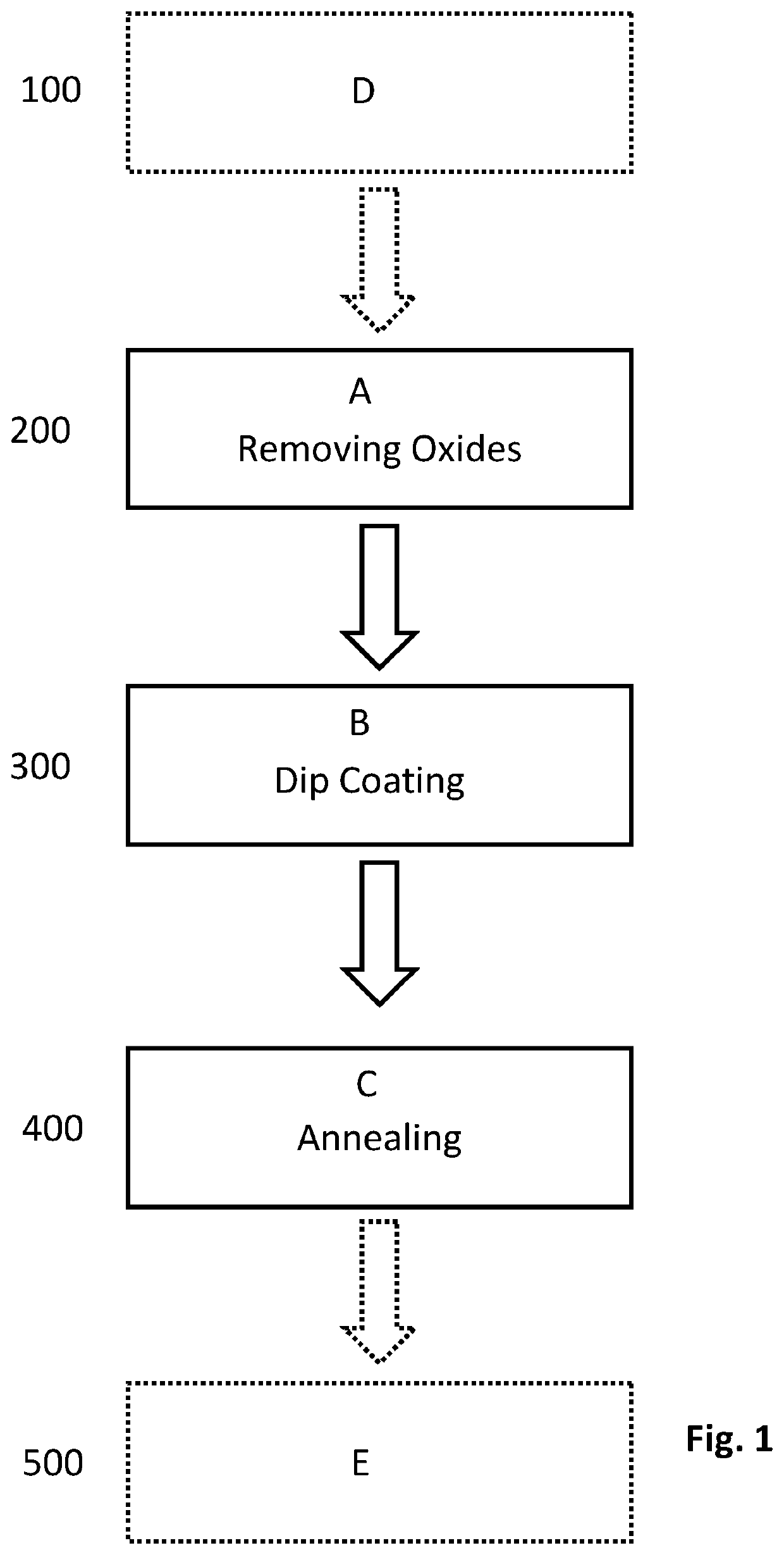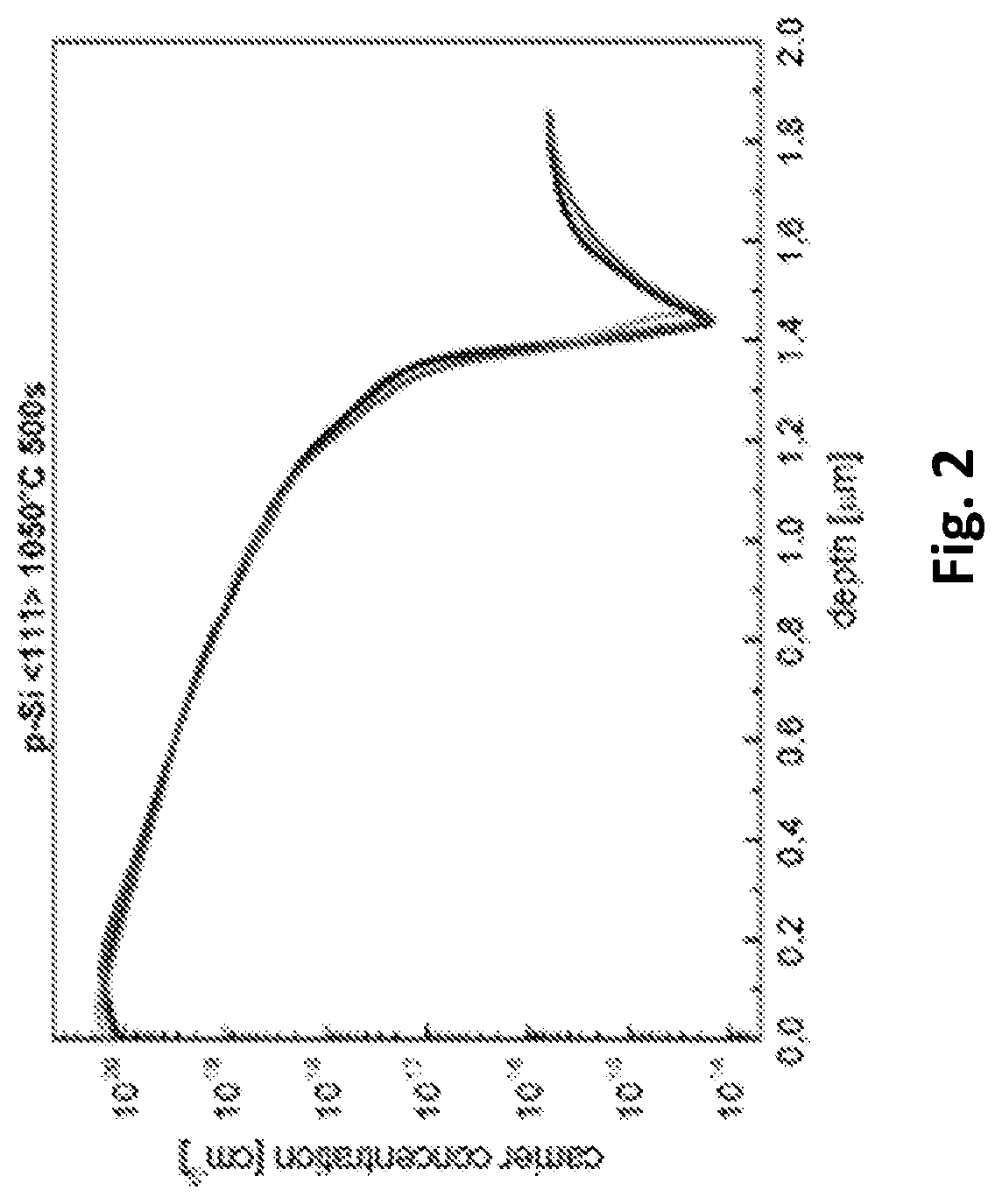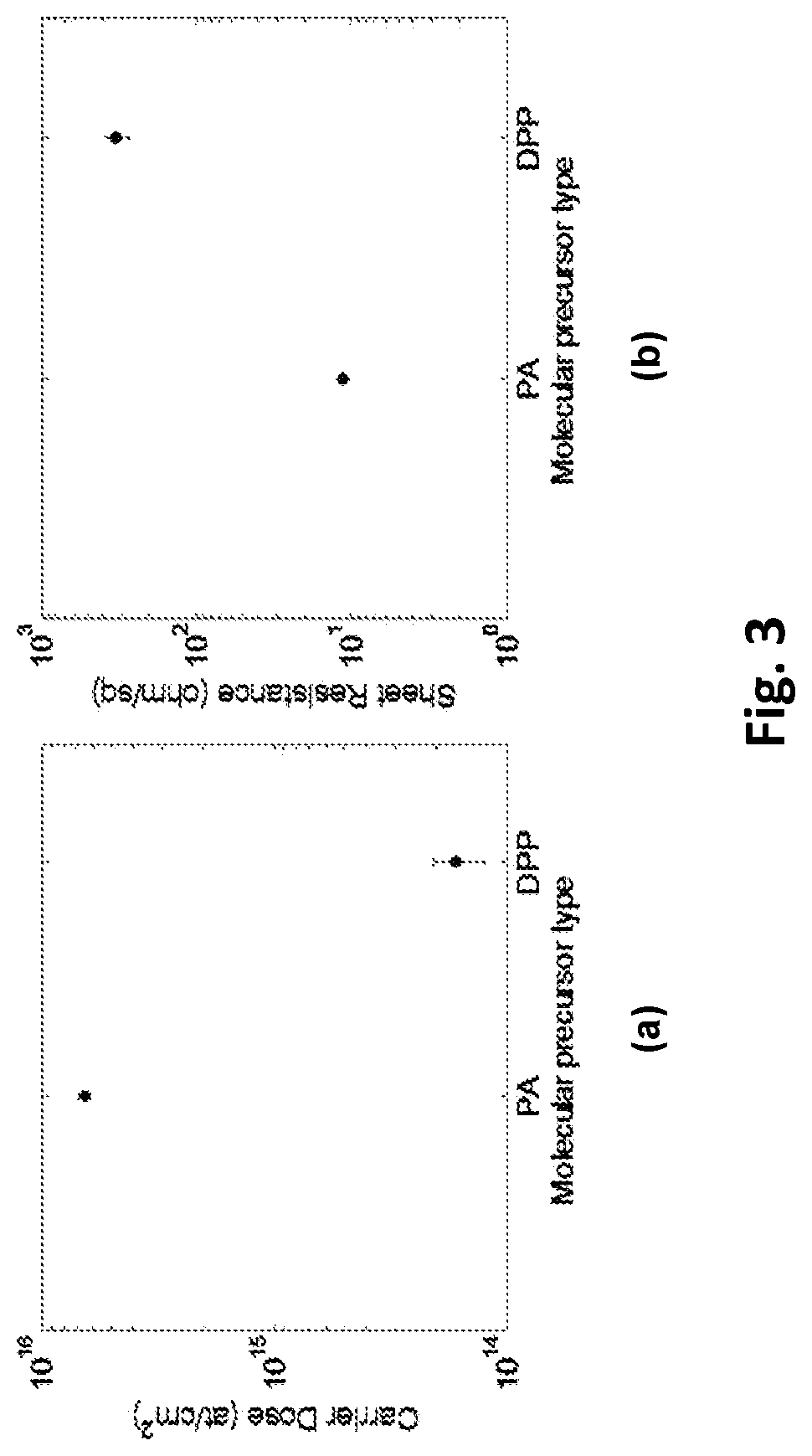Molecular doping
- Summary
- Abstract
- Description
- Claims
- Application Information
AI Technical Summary
Benefits of technology
Problems solved by technology
Method used
Image
Examples
Embodiment Construction
[0075]In the following of the present description, the invention will be disclosed with reference to silicon as semiconductor material of which the sample is made of and to phosphoric acid as a n-type molecular dopant precursor. However, it should be noted that the method according to the invention is also applicable to other types of semiconductor materials such as GaN, Ge, GaAs, SiC, graphene, silicene, germanene, stanene, other elemental two-dimensional materials and other dopant molecules may be used in case of p-type molecular doping such as boric acid and / or metaboric acid.
[0076]With reference to FIG. 1, the first embodiment of the method according to the invention dopes a silicon (Si) sample in a uniform and carbon-free way, wherein said sample has a surface, and comprises the following steps:[0077]A. removing (200) oxides from at least part of the said surface;[0078]B. dip coating (300) said at least part of the surface of the sample in a solution of phosphoric acid diluted ...
PUM
 Login to View More
Login to View More Abstract
Description
Claims
Application Information
 Login to View More
Login to View More - R&D
- Intellectual Property
- Life Sciences
- Materials
- Tech Scout
- Unparalleled Data Quality
- Higher Quality Content
- 60% Fewer Hallucinations
Browse by: Latest US Patents, China's latest patents, Technical Efficacy Thesaurus, Application Domain, Technology Topic, Popular Technical Reports.
© 2025 PatSnap. All rights reserved.Legal|Privacy policy|Modern Slavery Act Transparency Statement|Sitemap|About US| Contact US: help@patsnap.com



